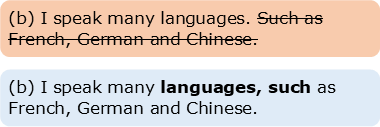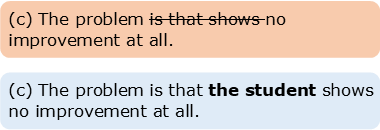What are 6 rules of English independent clauses?

This is the second and final chapter about Independent Clauses. To complete this course, read each chapter carefully and then unlock and complete our materials to check your understanding.
– Review the features of independent clauses
– Study six rules for writing grammatical independent clauses every time in academic settings
– Include examples of each feature to help guide the reader and worksheets to check proficiency
Before you begin reading...
-
video and audio texts
-
knowledge checks and quizzes
-
skills practices, tasks and assignments
Chapter 2

In Chapter 1 of this short reader, we introduced the concept of a clause and explained how it was different (though strongly connected) to the term sentence. We learned that sentences in fact comprise clauses and that clauses may be independent or dependent in type. In this final chapter on independent clauses, we pay careful attention to the rules that make for perfectly grammatical simple and compound sentences.
Independent Clauses Review
Thinking back to Chapter 1, independent clauses:
- may stand alone as sentences
- contain at least a subject and a verb
- may also comprise objects, complements and adverbials
- are the building blocks of simple, compound and complex sentence structures
- may be combined using coordinating conjunctions, conjunctive adverbs and semicolons
Rule 1: Identify Sentence Fragments
If a sentence doesn’t contain a minimum of one independent clause that has a subject and a verb, it won’t be grammatical. Such sentences are called sentence fragments. When proofreading your work before submission, keep a careful eye out for any fragments that (a) contain only dependent clauses, (b) include only phrases and not clauses, and (c) have no subject or main verb. Learn to identify and correct these errors if you wish to improve your grammar (our course on sentence fragments may help):




Rule 2: Fix Sentence Run-Ons
A sentence run-on, or ‘fused’ sentence, is any sentence that contains clauses which have not been joined correctly. With independent clauses in mind, when two such clauses are joined together to form a compound sentence without the correct punctuation mark or conjunctive word, this will create a run-on:


Thankfully, such run-ons are easy to fix. As the examples above show, either (i) add a comma (,) and coordinating conjunction, (ii) add a semi-colon (;), conjunctive adverb and comma, or (iii) add a semi-colon.
Rule 3: Avoid Comma Splices
Similarly, when two independent clauses are joined together using only a comma, this is also incorrect and is known as a comma splice. The three ways listed above that fix a sentence run-on will also fix the below comma splice:

Rule 4: Choose Correct Conjunctions
Because coordinating conjunctions are used to combine independent clauses to each other and subordinating conjunctions are for combining dependent clauses to independent or dependent clauses, students should memorise these conjunctive words and use them accurately. Below are some of the most common examples:

Rule 5: Use Conjunctive Adverbs
Conjunctive adverbs can also be used to combine or introduce independent clauses, particularly in academic contexts. As is explained in Rule 6 however, these and other conjunctive words have strict rules of punctuation that must be followed:

Rule 6: Remember Punctuation
The three punctuation marks that students will need to get right when using independent clauses are full stops (.), commas (,) and semi-colons (;):
- use full stops to mark the end of simple sentences (made of 1 independent clause) and compound sentences (made of 2 or more independent clauses)
- when joining two independent clauses using a coordinating conjunction such as ‘and’ or ‘not’, place a comma before that conjunction; never combine two independent clauses with only a comma as this will form an ungrammatical comma splice
- semicolons can be used to join two independent clauses
- when joining two independent clauses using a conjunctive adverb such as ‘however’ or ‘therefore’, place a semicolon before that adverb and a comma after it
Well done on completing this short reader. Have you checked your progress and understanding by unlocking, downloading and completing our worksheets?
Downloadables
Once you’ve completed both chapters in this short reader about Independent Clauses, you might then wish to download our Chapter Worksheets to check your progress or print for your students. These professional PDF worksheets can be easily accessed for only a few Academic Marks.
Chapter 1 explores the topic: What makes an independent clause grammatical? Our Chapter 1 Worksheet (containing guidance, activities and answer keys) can be accessed here at the click of a button.
Chapter 2 explores the topic: What are 6 rules of English independent clauses? Our Chapter 2 Worksheet (containing guidance, activities and answer keys) can be accessed here at the click of a button.
To save yourself 1 Marks, click on the button below to gain unlimited access to all of our Independent Clauses Chapter Worksheets. This All-in-1 Pack includes every chapter, activity and answer key related to this topic in one handy and professional PDF.
Collect Academic Marks
-
100 Marks for joining
-
25 Marks for daily e-learning
-
100-200 for feedback/testimonials
-
100-500 for referring your colleages/friends